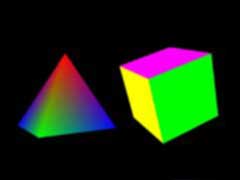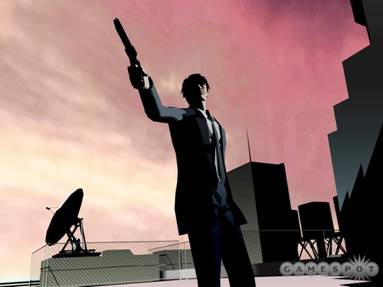|
It's humorous yes,
but focus on the guy's shirt, and HIS arm. notice how his skin color
doesn't gradually change from light to dark as it moves away from
the light? neither does the color of his shirt. its a very sharp
stark contrast. it moves from one shade into another. this is the
"Color Banding" that Microsoft was talking about earlier. When
programmers attempt to cell-shade a game, they are trying to
replicate this effect.
Also notice the
streaks of yellow emanating from the impact site, and the stars
around his head, these are examples of special effects that
designers try to include in order to make their games more closely
resemble cartoons.
So, HOW does a
Cel-lighting engine make rendered objects look like cartoons? well,
this is really hard to explain without getting really technical, so
I'll have to explain a few common Rendering terms. First off, you
have to understand that when drawing in a graphics library like
OpenGL, the objects drawn have no inherent color or image.
everything is drawn white by default. objects can be drawn various
colors (Like blue, green etc.) but usually artists don't want to
draw things like a blue box, they want to draw a box that LOOKS like
something in real life, like a crate. Artists do this with something
called a Texture, which is usually a bitmap image that
resembles some kind of surface. This image is then stretched over
the object to make the surface appear to have that images' texture.
Here's an example below-

A pyramid and Cube
with basic coloring

A bitmap Texture

A basic Cube, with
the above bitmap texture wrapped around it
Now, when creating a
cel-lighting engine, Designers use a special kind of texture, Called
a one-dimensional Texture.
Next Page of "How it Works">>
Home |


